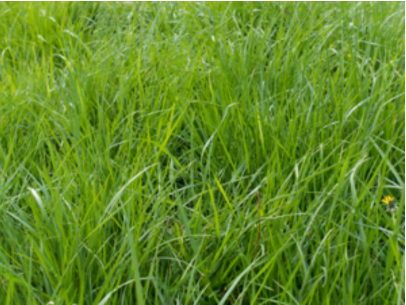Spring eczema in calves
What is spring eczema?
“Spring eczema” is a well-recognised problem that occurs sporadically in weaned calves and adult cattle in September – November in many parts of New Zealand. Affected animals develop typical photosensitivity lesions on unpigmented parts of the skin and/or udder.
Spring Eczema is not unlike our other photosensitivity problems loosely referred to as eczema. In reality it has little or nothing to do with eczema, it is in fact a reaction to the light from the sun and can occur in all seasons of the year but is certainly more predominant when pastures are at their most lush and in a stage of rapid growth.
It can be difficult to diagnose initially because it often occurs at times when the suns intensity is not at its peak. Animals will often just appear generally unwell and off their feed only for the classic sunburn type lesions to present further down the track. It often only strikes individual animals
What causes Spring Eczema?
The abundance of phylloerythrin in the blood, a compound produced in the breakdown of chlorophyll in the gastrointestinal tract and other photodynamic chemicals.
High levels of nitrogen in lush pastures reducing the ability to absorb vitamin A
From eating (or absorbing through the skin) a photosensitising substance that is present in some common weeds
The role of phylloerythrin
Normally, phylloerythrin is absorbed into the blood, then removed by the liver and excreted in the bile. When there is liver damage, this process is disrupted, leading to accumulation of phylloerythrin in the blood and subsequent photosensitisation causing a condition similar to facial eczema (often without the overt liver damage).
The role of vitamin A
Plants convert the sun's energy into chemical energy as the means for producing carbohydrates and eventually fats (lipids) and other tissue compounds.
In the flush growing spring season, much of the nitrogen contained in the pasture has yet to be transformed from nitrogen to protein. Lack of sunshine can often accentuate the levels of nitrogen in pastures.
This high level of nitrogen in the pasture greatly reduces the ability of the animal to convert carotene, found in most green vegetables including grass, to vitamin compounds, and to absorb the vitamins produced. Anything that reduces the absorption of vitamins puts stress on the liver function of the animal.
For the animal to benefit from the production of vitamin A found in carotene, it must first be absorbed through the intestinal wall.
As this vitamin is absorbed through the intestinal wall, damage to that wall will affect its absorption. This means that animals with high parasite infestation will also have increased difficulty with vitamin absorption.
Vitamin A is involved in the epithelium (the first line of defence), the protective outer skin of all cells. When this line of defence is compromised, or when there is insufficient vitamin A available the liver of the animal is stressed also.
When liver tissue breaks down, the bile pigment and the chlorophyll from the grass is released into the blood stream reacting with the sunlight giving us what is known as photosensitivity, revealed by an appearance of severe sunburn.
Photosensitising substance present in some common weeds.
Some plants contain compounds that cannot be modified in the body and are activated by sunlight causing cellular damage after ingestion without the need for the liver to be damaged.
St Johns Wort is a well-known weed that does this, as well as a common NZ weeds Musky Storksbill, ragwort and Ngaio as well as rape and turnips.
What can we do?
Treating effected animals
Early detection and treatment are important with immediate removal from sunlight playing a key role.
Provide shade
Once affected remove them from the lush pasture and replace it with less “chlorophyll-rich” feeds like meal, molasses, hay or silages. This gives the liver a bit of a break allowing it to adjust more slowly.
Apply sun blocks and disinfectant creams; anti-inflammatories are useful in the early stages
Prevention
Refrain from using Nitrogen to boost spring growth.
Make sure that all animals are free from worm burdens.
Prevent access to toxic plants such as St Johns Wort, ragwort, Ngaio and rape and turnips. If you see eczema-type lesions without any known cause, consider what plants your stock have been grazing and manage appropriately. Fencing off areas with large numbers of photosensitising weeds or spraying them out might be advisable.
Graze a mixed sward rather than fast growing lush pasture.
Avoid anything that stresses the liver function of the animals such as blanket spraying pastures with weed killer and hormone ragwort sprays.
In older cattle, make sure the animal receives a boost in Vitamins A, D & E at least three times per year, one prior to calving, one prior to mating, and one at drying off. As vitamins A, D, and E are synergistic, that is, they assist each in their action and reaction, always administer these vitamins together.
Download the Spring eczema in calves PDF.
References::
Dr Greg Lindsay BVSc - https://franklinvets.co.nz/2021/02/10/eczema-part-2/
Peter J Lester - https://www.qlabs.co.nz/page/spring-eczema/
https://grazinginfo.com/wp-content/uploads/2017/05/Spring-Eczema.pdf
http://www.srvs.co.nz/Resource-Centre/spring-eczema
BIOCALF Plus Provides energy, nutrients, minerals, probiotics, prebiotic yeast, enzymes and gelling agent Guar gum.
Click here to learn more about Biocalf Plus
BIOCALF Restore. Provides energy, nutrients, and minerals, at a low cost.
SITES OF INTEREST
Antahi Innovations Ltd Antahi Innovations Ltd are a company that specialises in innovative calf rearing solutions
Calf Notes Read the latest international research and information on calf rearing?
Calf Sessions A resource for calf health, nutrition, physiology and management
NZAGBIZ From colostrum management to health and biosecurity, experts from AgResearch and Fonterra discuss all things calf rearing.





